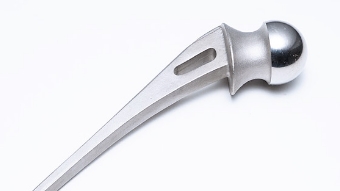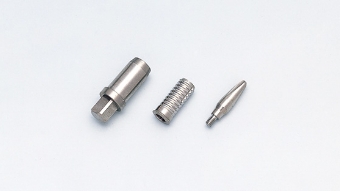The Applications
of Titanium
Scroll Down
Titanium products can blend in with our everyday life
in various ways.
Titanium metal is environmentally friendly because it has such superior properties as light-weight, high strength, corrosion resistance, and biocompatibility, and it can be recycled easily thanks to its property of changing little over time. Accordingly, it is being utilized for various applications in our everyday life, ranging from aircraft to daily necessities.
Aerospace
![[Photograph provided by] ANA](https://www.toho-titanium.co.jp/wordpress/wp-content/themes/toho-titanium_2022/img/applications/photo01.jpg) [Photograph provided by] ANA
[Photograph provided by] ANA![[Photograph provided by] IHI Corporation](https://www.toho-titanium.co.jp/wordpress/wp-content/themes/toho-titanium_2022/img/applications/photo02.jpg) [Photograph provided by] IHI Corporation
[Photograph provided by] IHI Corporation
You could say that aerospace is suitable for making the most of the properties of titanium, such as light-weight, high strength, and excellent corrosion resistance. Titanium that can realize light-weight while maintaining strength is a material essential for evolution of aircraft whose goal is not only the pursuit of economic performance, but also further improvement of fuel efficiency.
| Features | Light-weight, high strength, and high corrosion resistance |
|---|---|
| Examples of purposes of use |
Jet engine parts (such as fans and compressors), structural materials for aircraft bodies, fuel tanks, landing gears, bolts, and springs |
Reasons why titanium is chosen
About half of the global demand for titanium is from aerospace. Titanium began to be used in large amounts in the 1960s primarily as a material for jet engines owing to its characteristics of being light and strong, and it is also used in parts of the aircraft body, including the landing gear, leading edge, and bolts.
In addition, as light Carbon Fiber Reinforced Plastics (CFRP) is used in the many parts of the aircraft body, titanium, which has a thermal expansion coefficient close to that of CFRP and has no issues of corrosion, is being used more broadly because it is highly compatible with CFRP.
General industry
Various chemical plants
Titanium, which is relatively resistant to corrosion by a number of chemicals and seawater, is utilized widely in plants, such as liquefied natural gas (LNG) plants, seawater desalination plants, and chemical plants.
| Features | Light-weight, high strength, and high corrosion resistance |
|---|---|
| Examples of purposes of use |
Turbine blades, seawater desalination equipment and condensers at power/seawater desalination plants; electrodes, storage tanks, plumbing, and bulbs at chemical plants/electrolysis facilities |
-
Tank truck
Regarding tank trucks that carry such chemicals as sodium hypochlorite and sodium chromate, light-weight, highly corrosion-resistant, and strong titanium is used as a material for tanks.
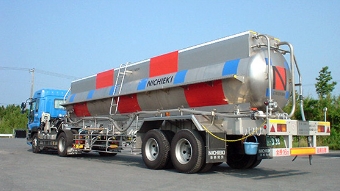
-
Heat exchanger
Titanium is used as a safe and economical material for heat exchangers that are used under harsh conditions, including high temperature and high pressure.
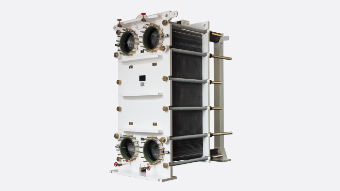 [Photograph provided by] Alfa Laval AB
[Photograph provided by] Alfa Laval AB
Construction
Architecture and monuments
With its light-weight, long-term durability, and material texture being recognized, titanium is used for roofs of traditional Japanese architecture, museums, and roofs and exteriors of domed stadiums and has now earned a reputation as the new and best building material.
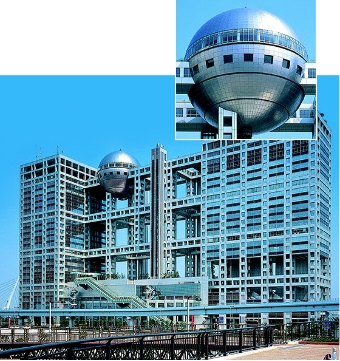 Spherical Observation Room of the headquarters building of Fuji Television Network, Inc.
Spherical Observation Room of the headquarters building of Fuji Television Network, Inc.
![Side walls of Tokyo Big Sight [Photograph provided by] ©Satoru Mishima](https://www.toho-titanium.co.jp/wordpress/wp-content/themes/toho-titanium_2022/img/applications/photo08.jpg) Side walls of Tokyo Big Sight
Side walls of Tokyo Big Sight
[Photograph provided by] ©Satoru Mishima![Hotel Marques de Riscal (Spain) [Photograph provided by] Nippon Steel Corporation](https://www.toho-titanium.co.jp/wordpress/wp-content/themes/toho-titanium_2022/img/applications/photo09.jpg) Hotel Marques de Riscal (Spain)
Hotel Marques de Riscal (Spain)
[Photograph provided by] Nippon Steel Corporation
| Features | Light-weight, high strength, high corrosion resistance, and colorability |
|---|---|
| Examples of purposes of use |
Roof materials, wall and building materials, inner and outer walls, floor materials, building materials for coloring, monuments, nameplates, and handrails |
-
Main Hall of Senso-Ji Temple
Titanium is used increasingly for roofs of buildings because the appearance of Japanese traditional roof tiles can be maintained thanks to the improved titanium processing technology while titanium’s corrosion resistance and light-weight increase seismic resistance.
 [Photograph provided by] ©CANAME
[Photograph provided by] ©CANAME -
Kyushu National Museum
The roof is made of blue color titanium (colored titanium).
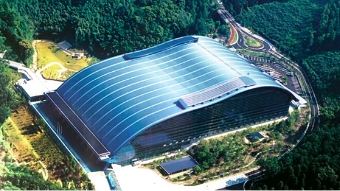
Automobiles and motorcycles
Automobiles and motorcycles
![[Photograph provided by] Honda Motor Co., Ltd.](https://www.toho-titanium.co.jp/wordpress/wp-content/themes/toho-titanium_2022/img/applications/photo12.jpg) [Photograph provided by] Honda Motor Co., Ltd.
[Photograph provided by] Honda Motor Co., Ltd.![[Photograph provided by] Nippon Steel Corporation](https://www.toho-titanium.co.jp/wordpress/wp-content/themes/toho-titanium_2022/img/applications/photo13.jpg) [Photograph provided by] Nippon Steel Corporation
[Photograph provided by] Nippon Steel Corporation
Titanium plays an active role in the field of automobiles and motorcycles as well. In particular, out of the parts of motorcycles, it is mufflers in which titanium is used most. Titanium is highly acclaimed for its heat resistance, strength, and rust-proof property as a material for mufflers used in severe conditions.
| Features | Light-weight, high strength, high corrosion resistance, and high heat resistance |
|---|---|
| Examples of purposes of use |
Mufflers, connecting rods, engine valves, and springs |
Daily necessities
Sporting and leisure goods
Titanium is used in a wider range of applications in our daily life, including not only golf clubs, but also tennis rackets, wristwatches, glasses, knives, jewelry, and sculptures.
| Features | Light-weight, high strength, fashionability, high corrosion resistance, and biocompatibility |
|---|---|
| Examples of purposes of use |
Golf equipment, tennis rackets, ski goods, bicycles, and mountain-climbing gear |
Titanium driver heads
Titanium alloy is used for the head of drivers. Driver heads made of titanium are gaining popularity because light and large heads improve a flying distance and direction accuracy.
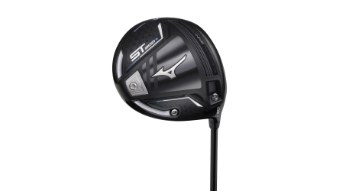 [Photograph provided by] ©Mizuno Corporation
[Photograph provided by] ©Mizuno Corporation
Daily necessities
Wristwatches and glasses
Titanium, which possesses such properties as light-weight, corrosion resistance, biocompatibility (which means that it does not trigger metal allergies), and moderate springiness, is used widely as a material for glass frames. It is also used for wristwatches for the same reason, and the luxurious texture of titanium is one of its selling points.
Jewelry
Titanium is used broadly for jewelry, including pierced earrings, clip-on earrings, necklaces, tiepins, and cufflinks, because it is light, does not cause metal allergies, and has unique texture and fashionability.
Kitchen knives and other knives
Titanium is suited for kitchen knives because it causes no harm to the human body and is sanitary. It has superior properties, such as light-weight and user friendliness, while titanium knives can be kept sharp six times longer than stainless knives.
-
![[Photograph provided by] ©CASIO Computer Co., Ltd.](https://www.toho-titanium.co.jp/wordpress/wp-content/themes/toho-titanium_2022/img/applications/photo15.jpg) [Photograph provided by] ©CASIO Computer Co., Ltd.
[Photograph provided by] ©CASIO Computer Co., Ltd.
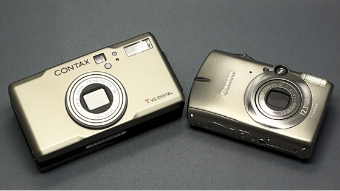 Wristwatches and glasses
Wristwatches and glasses
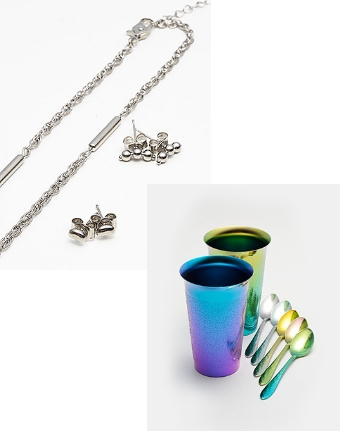
Health
As titanium is highly biocompatible and seldom induces metallic allergy, it is broadly utilized as a material for implants, such as artificial dental roots and artificial bones, and its application field is expanding.
| Features | Non-toxicity, biocompatibility, high corrosion resistance, and high strength |
|---|---|
| Examples of purposes of use |
Materials for artificial bones, heart valves, pacemakers, surgical instruments, dental roots, and shape-memory alloys |
Dental instruments made of titanium
In the dental field, many tools made of titanium alloy, which is lighter than steel, are used. Such tools made of titanium are superior to those made of stainless steel in corrosion resistance and strength.
Artificial dental roots
Since titanium is highly biocompatible and harmless to the human body, it is used as a material for artificial dental roots.
Offshore engineering
![[Photograph provided by] Joint venture for constructing Runway D for enlarging the Haneda Airport](https://www.toho-titanium.co.jp/wordpress/wp-content/themes/toho-titanium_2022/img/applications/photo20.jpg) [Photograph provided by] Joint venture for constructing Runway D for enlarging the Haneda Airport
[Photograph provided by] Joint venture for constructing Runway D for enlarging the Haneda Airport![Coating steel pipe piles with titanium [Photograph provided by] ©H. OSAWA](https://www.toho-titanium.co.jp/wordpress/wp-content/themes/toho-titanium_2022/img/applications/photo21.jpg) Coating steel pipe piles with titanium [Photograph provided by] ©H. OSAWA
Coating steel pipe piles with titanium [Photograph provided by] ©H. OSAWA
| Features | High corrosion resistance and light-weight |
|---|---|
| Examples of purposes of use |
Runway D of the Haneda Airport, coating of steel pipe piles for corrosion prevention, marine bridge piers, and fittings |
Piers for Runway D of the Haneda Airport
Tokyo Wan Aqua-Line Expressway (titanium-coated bridge piers)
Ocean thermal energy conversion (OTEC) plants
Ocean thermal energy conversion, which is attracting attention as a new power generation method, generates power by circulating the mixture of ammonia and water based on the variation in seawater temperature. Titanium, which can tolerate seawater, is most suited for pipes and devices for realizing this power generation.



